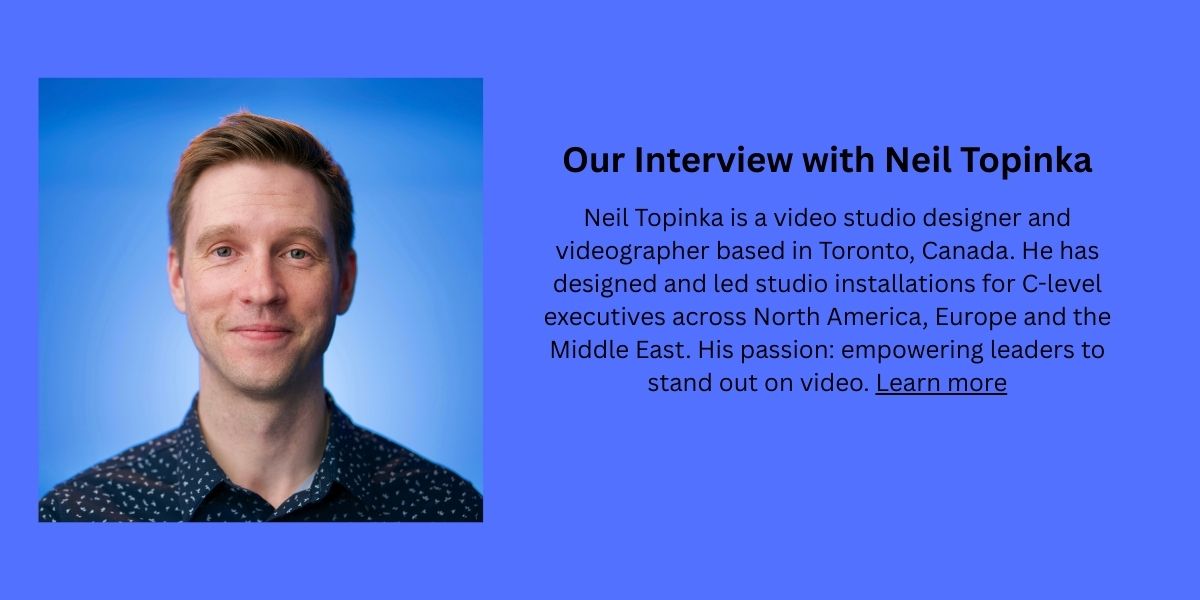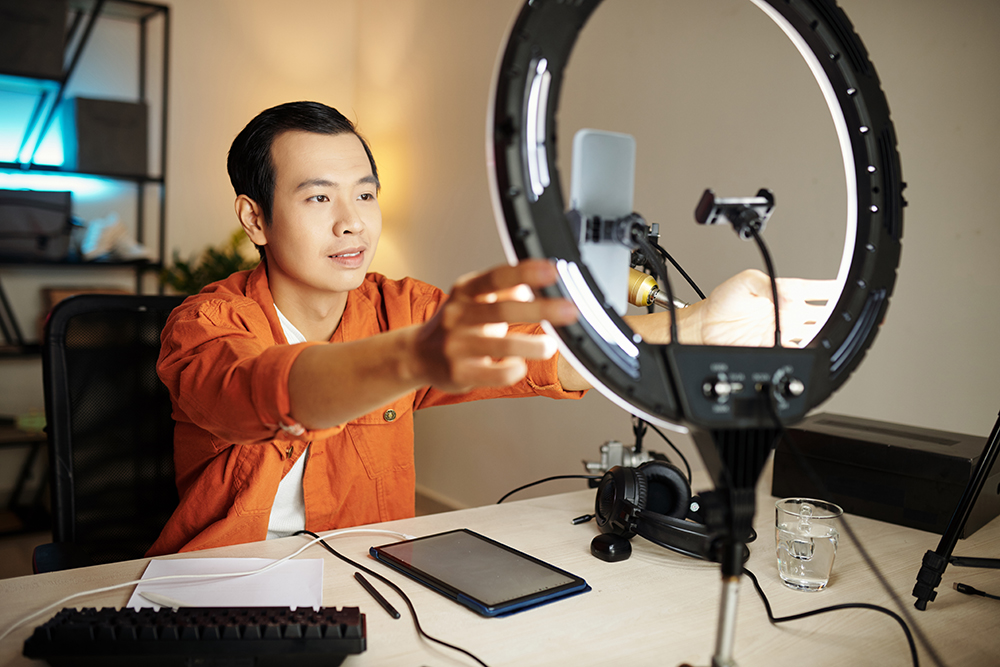In today’s hybrid work environment, on-camera presence is an essential aspect of professional and company identity. Whether leading a meeting, recording content for social media, or hosting a webinar, how teams and individuals show up on camera can make a great—or disastrous—first impression.
As AI-generated content becomes increasingly ubiquitous, showing up as your most authentic self on video has never been more important. The digital landscape is flooded with polished but impersonalized media. Being genuine (and human) is one of the most powerful ways to cut through the noise and connect.
To help guide organizations through this shift, we sat down with Neil Topinka, a digital presence expert who specializes in optimizing video setups. Below, Topinka shares his top tips for elevating video presence—whether for individuals aiming to refine their own presentation or leaders looking to empower their teams.




 Camera at Eye Level
Camera at Eye Level Get Your Microphone Close
Get Your Microphone Close Soft Lighting
Soft Lighting Practice Makes Perfect
Practice Makes Perfect
